Numbers Matching Drivetrain
The last several digits of the VIN (Vehicle Identification Number) were stamped throughout the Challengers and other Mopars on the factory line for ID verification purposes. More often than not, they're quite crudely stamped, but stamped they are. They're usually the last 5-6 digits of the VIN number. These stamping locations are: on the fender tag, engine ID pad, passengers side just above the sump, dash tag, drivers door jamb decal, drivers side cowl, drivers side radiator support and if applicable, the broadcast sheet (usually hudden under the seat. When all these are identical and match, your vehicle is "numbers matching" hence the term. To see a breakdown of Lucy's fender tag options, please view the Purchasing the R/T page HERE.
If the numbers match, in short, the car and it's drivetrain are the "real deal". It's how the vehicle rolled off the factory floor. To many people, this is the ultimate. There are many, many "clones" or as I prefer to call them "tributes" or "replicas" (you clone sheep, not Mopars!) so it's lovely having a #'s matching vehicle (or in my case the drivetrain ready and waiting). There are only around a handful (literally) of REAL JS23U code vehicles in New Zealand. Running a NZ Mopar Registry in my past, it gave me a great insight into what we really have here. Knowing there are only a handful of real #'s 440 R/T vehicles just makes owning one a little more special.
I am truly thankful to own this car especially when considering she is 1 of 1,886 ever made with her 440bbl / TF727 R/T combo. Who knows how many of those cars are still on the roads today some 50 years later, given accidents, rusty heaps and fire/thefts, it will most definitely be a much lower figure now, that's for sure. Below are photos of my factory #'s 440 Magnum and the original transmission VIN stampings. The #'s engine is currently in a climate controlled unit after the Hemi conversion. The TF-727 transmission was rebuilt and is still in the vehicle to this date.
My Challenger's Engine & Transmission #'s
7 Digits of Lucy's VIN Stamped on Engine: 0E11959
Block Casting #: 2536430-6 = 1966-72 440ci RB V8 Engine
6 = The Core Revision Number
Block Casting Date = May 14, 1969
F440 = 1970 (F = 70) 440ci Engine
11-4-HP = High Performance 440 with a Build Date of November 4, 1969
PK = Transmission Built at the Kokomo Assembly Plant in Indiana, USA
3410670L = Heavy Duty TorqueFlite-727 Built for 1970 B/C/E-Bodies with HP440
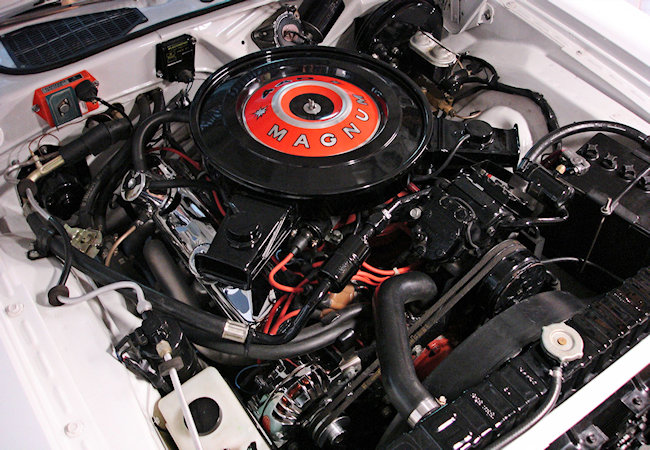
The 440ci 4bbl Magnum (U-Code) 375hp / 480lb-ft numbers matching engine after restoration including the correct H51 code for Air Conditioning.
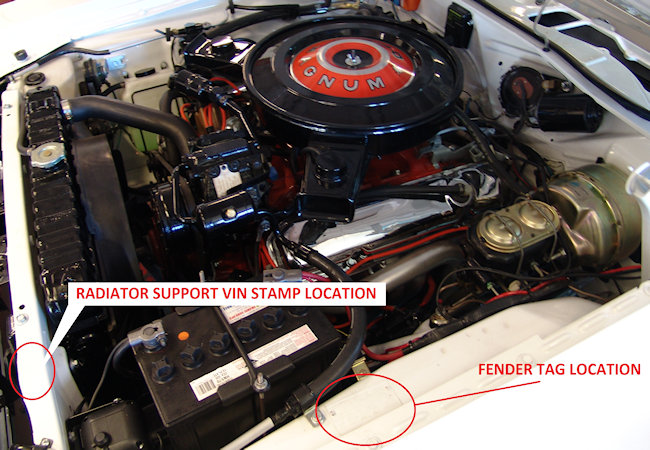
Showing 2 of the VIN stamping locations used by the factory. Also not shown is the cowl location in front of the front windshield. The fender tag not only confirms the VIN number but has a list of all the vehicles major options. All cars were unique and ordered with numerous options. Back in the 60s/70s cars had a lot more variety, especially Mopars. Bright cartoon colours like Plum Crazy, Go Mango, Panther Pink, Limelight Green etc, crazy hoods, "wild decal packages", racing inspired shifters, vinyl tops, the list goes on.
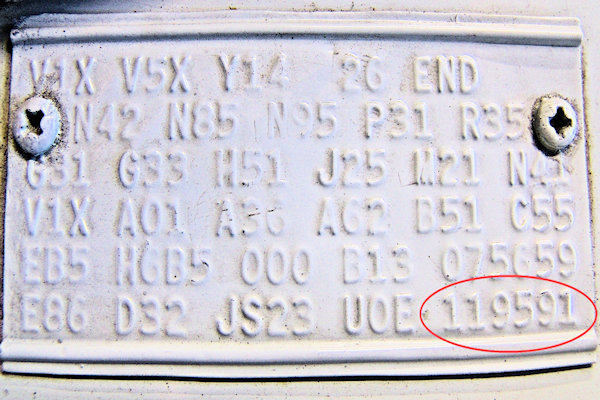
The fender tag up close. All those numbers relate to different options in my car, for example; P31 = Power Windows, B51 = Power Brakes, C55 = Bucket Seats. The last 13 digits form the "VIN Number". The last 5-6 digits (circled) are stamped (often crudely) on the other parts of the vehicle during the factory build process to "match" each other to verify and document the vehicle build.
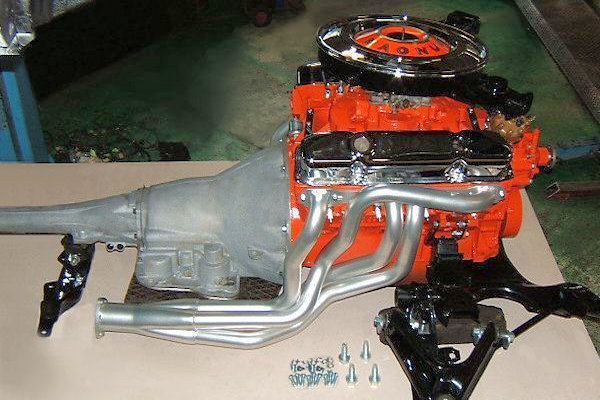
The #'s matching drivetrain restored and ready to be installed.

The most important stamp of all, the engine VIN block stamping. Sometimes you have to sand it back and search for it, but they are there. There are some very rare cases where there are no stampings or perhaps "000000". These are known as "Warranty blocks" and were as you guessed, built for warranty / replacement purposes.
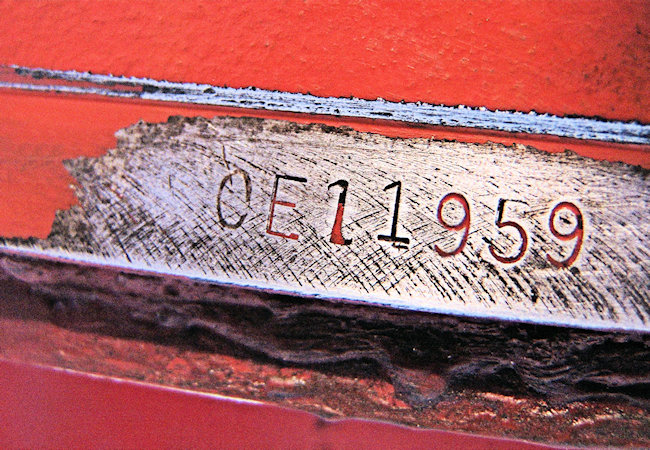
The exact same area after being sanded back to reveal, the same numbers as the fender tag... she's the real deal. A numbers matching 440ci engine. Very cool! Sometimes due to the poor methods and sloppy stamps, it's common for numbers to be crooked, barely readable or missing the last digit (or 2). When they are completely different, that's when you own a "non-numbers matching vehicle" which there is nothing wrong with either, some people don't care or mind one bit, fair enough too! :)
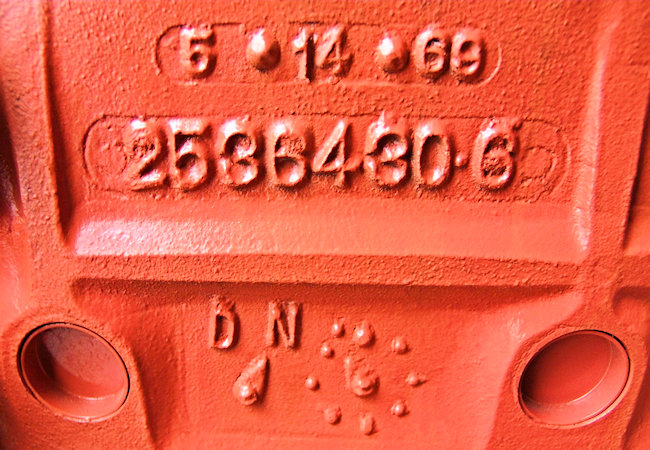
The block casting #. This is located on the drivers side just below the head. The block casting date = May 14, 1969 (when the main bare block was first created). The engine block casting #: 2536430-6 = 1966-72 440ci RB V8 engine. The 6 = the core revision #. Below that is a symbol tat resembles a clock with a D (Day) and N (Night) indicator which determines the hour and whether it was a day or night shift crew who manufactured the block. This particular block was manufactured around 11pm at night.
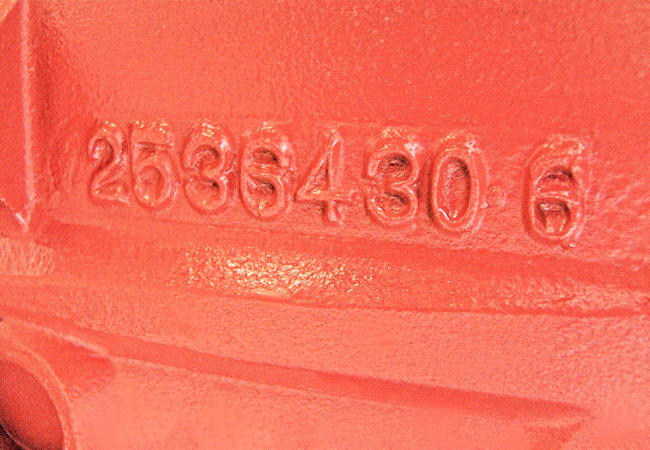
The passenger side of the block showing the same block casting stamp.
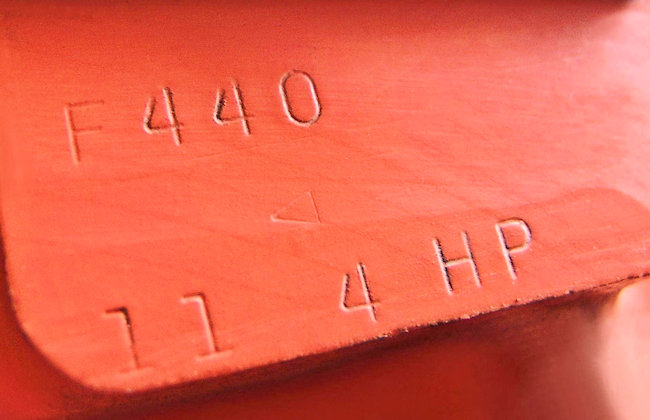
This ID pad (on the top of the block) identifies that this #'s engine is a 1970 (F = 1970) High Performance 440 with a build date of November (11) 4, 1969. This means the bare 440 block was made/cast (May 14, 1969) and then finally built and assembled 5 months and 3 weeks later (175 days)! Interesting stuff.

The numbers matching heavy duty Torqueflite-727 (TF727) transmission.
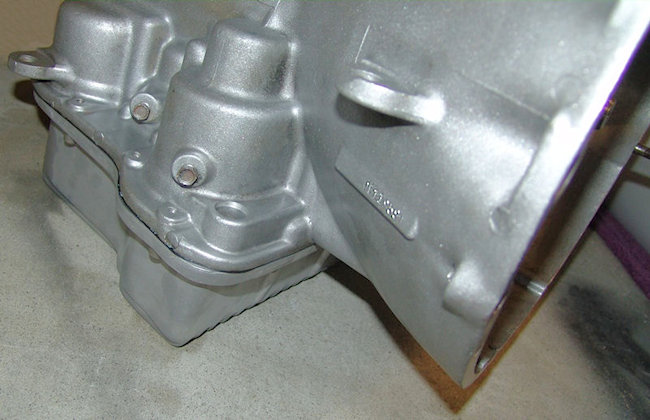
The stamping number, located on the passengers side casing.
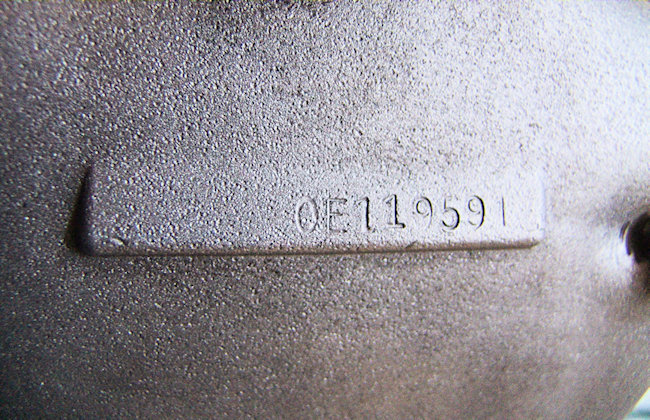
Closer up. It has the same VIN stamping as the engine, fender, dash and all the other parts of the car. Very cool to see and confirm.
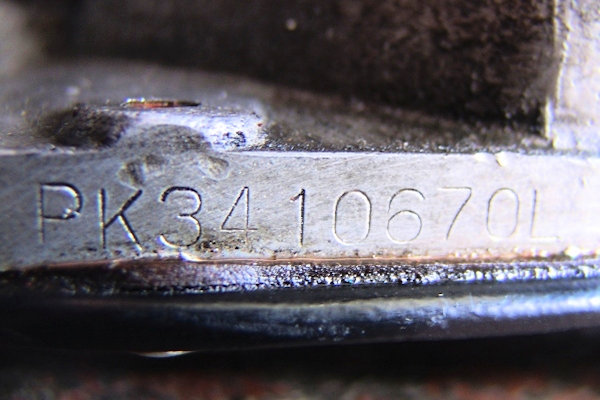
This stamping is located just above the oil pan area on the transmission. PK = Built at the Kokomo assembly plant in Indiana, U.S.A. 3410670L = Heavy Duty Torqueflite-727 transmission built for 1970 B, C or E-Body vehicles with a High Performance 440-4bbl RB V8.
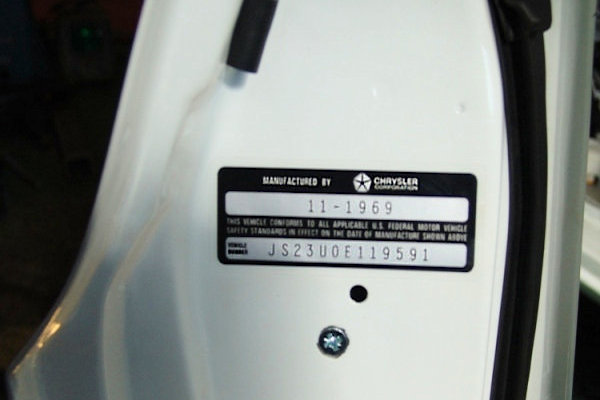
The door jamb decal also showing the VIN number and build date.

A very poor photo showing the cowl hood stamping. "E0 119591"
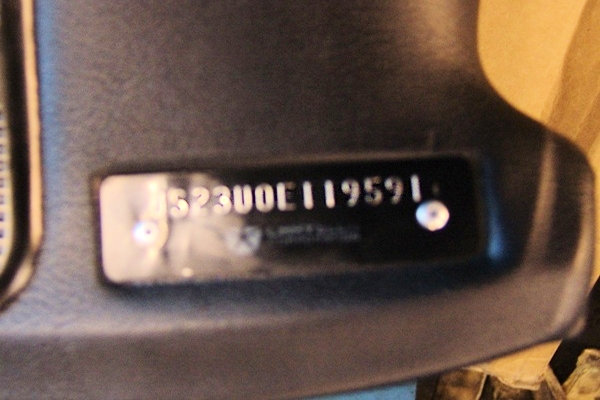
The dash VIN tag located on the drivers side dash.
